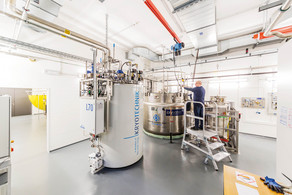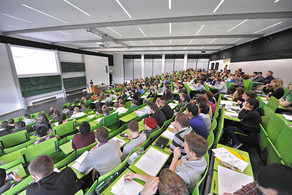Thesis defense of Lukas Nickel
- Defense
Using the current-generation experiments of Imaging Atmospheric Cherenkov Telescopes (IACTs), a plethora of gamma-ray sources have been found in the sky. Nonetheless, there remain fundamental open questions in the field: How are cosmic rays accelerated? What can be learned about the extreme environments around black holes or supernovae? Will dark matter ever be found? Fully solving these questions will require experiments that are much more sensitive than currently available as well as more advanced methods of data analysis. To this end, a new observatory is currently under construction: the Cherenkov Telescope Array Observatory (CTAO). The first prototype telescope, the Large-Sized Telescope Prototype (LST-1) on La Palma was inaugurated in 2018. It is since taking data and producing the first scientific results as part of the commissioning while more telescopes of the CTAO are built. In this thesis, data from observations of the radio galaxy M87 taken with the LST-1 between April 2021 and January 2024 is analyzed using the low-level analysis pipeline for the LST-1, lstchain, and the CTAO science tool gammapy. A three-dimensional analysis is developed and performed, including the construction of three-dimensional background models. From the produced background models, it is apparent that the assumptions of radial symmetry are in general not fully met and more general forms need to be considered to describe the detector response. The measured excess from the position of M87 is not incompatible with the background expectation, so a detection of the source can not be claimed. However, modeling the measured excess, it is found to be consistent with previous measurents of the source during periods of low source activity.

![Band structure of 2D semimetal based on HgTe quantum well. Experimental points are obtained from the analysis of the cyclotron resonance in the quasi-classical approximation. Solid lines are predictions of the kp theory with no free parameters. Splitting of the conduction (e1,2) and valence (h1) band is due to the quantum confinement. [J. Gospodaric, AP, et al., PRB 104, 115307].](/storages/physik/_processed_/b/5/csm_Kolloquium_Pimenov_0fa7761647.png)








